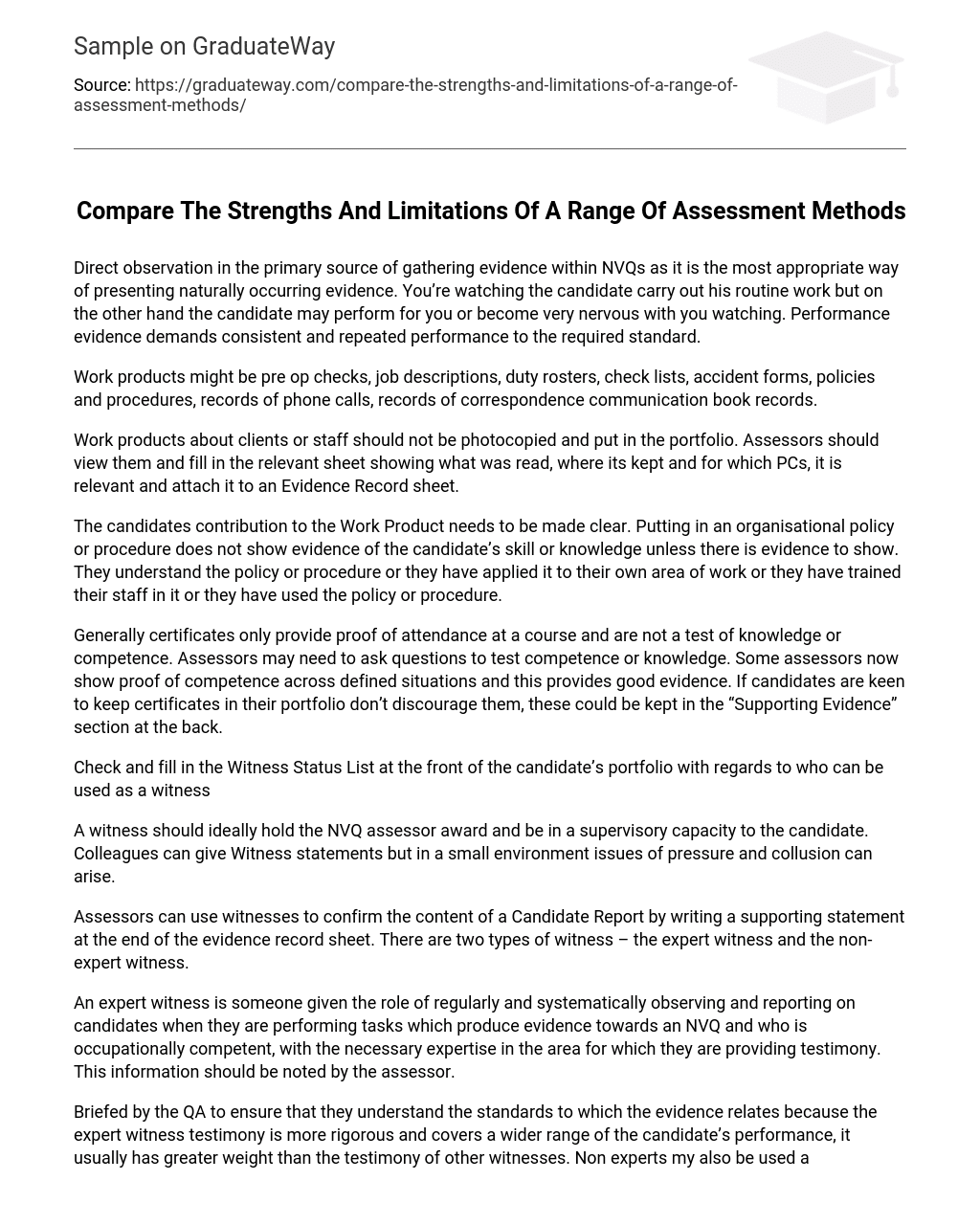Direct observation is the primary source of gathering evidence within NVQs as it is the most appropriate way of presenting naturally occurring evidence. You observe the candidate carrying out their routine work, but on the other hand, they may perform differently or become nervous with you watching. Performance evidence requires consistent and repeated performance to meet the required standard.
Work products may include pre-op checks, job descriptions, duty rosters, checklists, accident forms, policies and procedures, records of phone calls, correspondence records and communication book records.
It is not recommended to photocopy and include work products related to clients or staff in the portfolio. Instead, assessors should review them and complete a relevant sheet indicating what was read, where it is stored, and its relevance for which PCs. This sheet should be attached to an Evidence Record sheet.
The candidate’s contribution to the work product needs to be clearly demonstrated. Simply including an organizational policy or procedure does not provide evidence of the candidate’s skills or knowledge unless there is supporting evidence to show that they understand the policy or procedure, have applied it in their own work area, have trained their staff on it, or have used it themselves.
Generally, certificates only provide proof of attendance at a course and do not test knowledge or competence. Assessors may need to ask questions to assess competence or knowledge. Some assessors now offer proof of competence across defined situations, which provides good evidence. If candidates are keen on keeping certificates in their portfolio, don’t discourage them; these could be kept in the Supporting Evidence” section at the back.
Check and fill in the Witness Status List located at the front of the candidate’s portfolio to determine who can be used as a witness.
It is ideal for a witness to hold the NVQ assessor award and be in a supervisory role over the candidate. While colleagues can provide witness statements, issues of pressure and collusion may arise in smaller environments.
Assessors can utilize witnesses to verify the contents of a Candidate Report by drafting a supporting statement at the end of the evidence record sheet. There are two types of witnesses: expert and non-expert.
An expert witness is someone who is regularly and systematically observing and reporting on candidates as they perform tasks that produce evidence towards an NVQ. They must be occupationally competent and have the necessary expertise in the area for which they are providing testimony. The assessor should take note of this information.
During the QA briefing, it is ensured that the standards related to the evidence are understood. Expert witness testimony is more rigorous and covers a wider range of the candidate’s performance, therefore carrying greater weight than other witnesses’ testimony. Non-experts may also be used as witnesses, but their evidence may be less reliable than that of an expert witness since they are unlikely to be familiar with the assessed standards.
Assessors must evaluate the credibility of all witness testimonies. It is not possible to obtain NVQ units solely through witness testimony.
Achieving an NVQ unit always involves the observation of the candidate by a qualified assessor, who takes into account the evidence provided by witness testimony.
Simulation
This is a scenario where the candidate is unable to provide evidence to cover certain performance criteria and simply asking questions may not be enough. Examples of such scenarios include dealing with a health emergency or working with someone who challenges the service.





